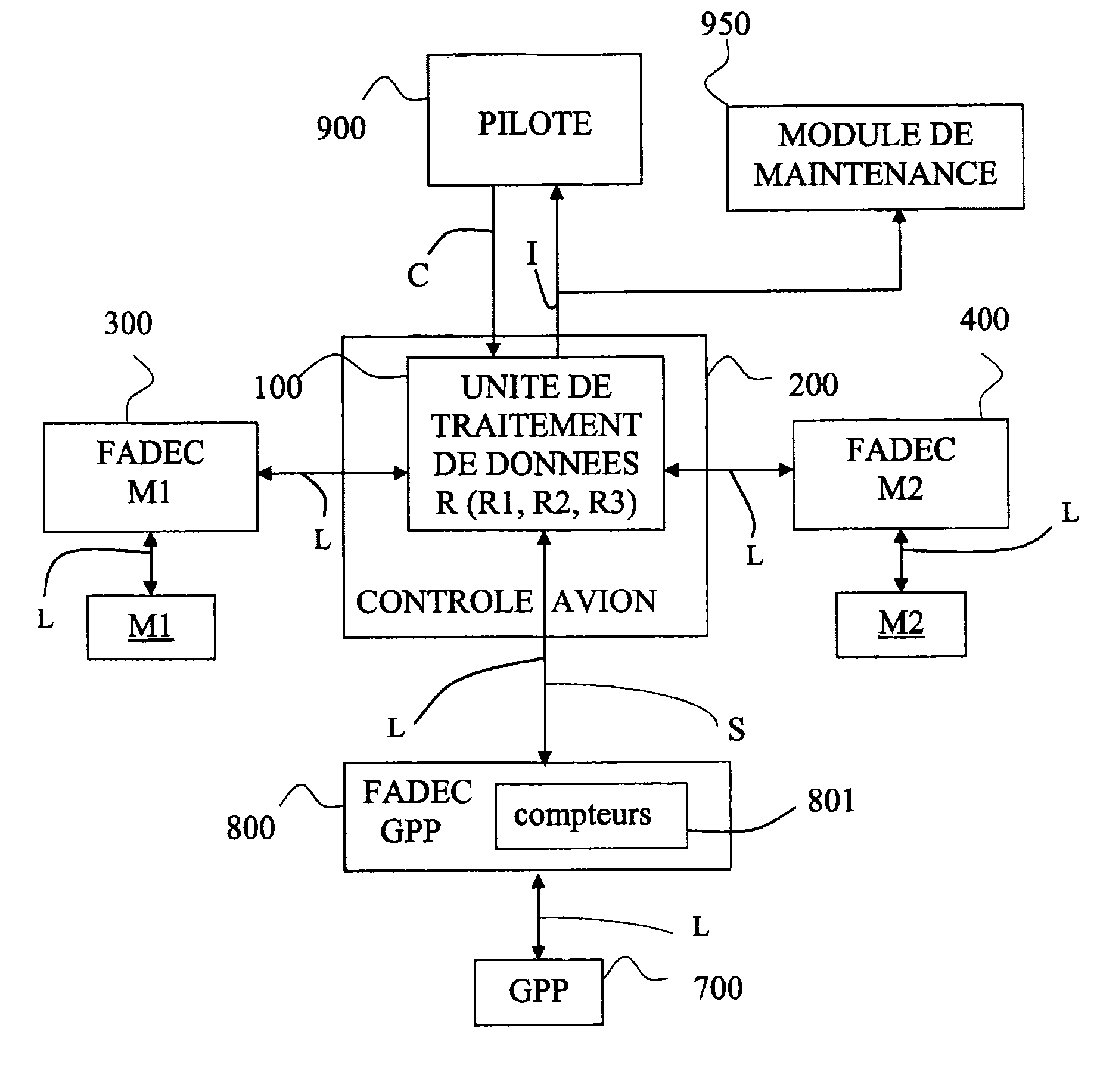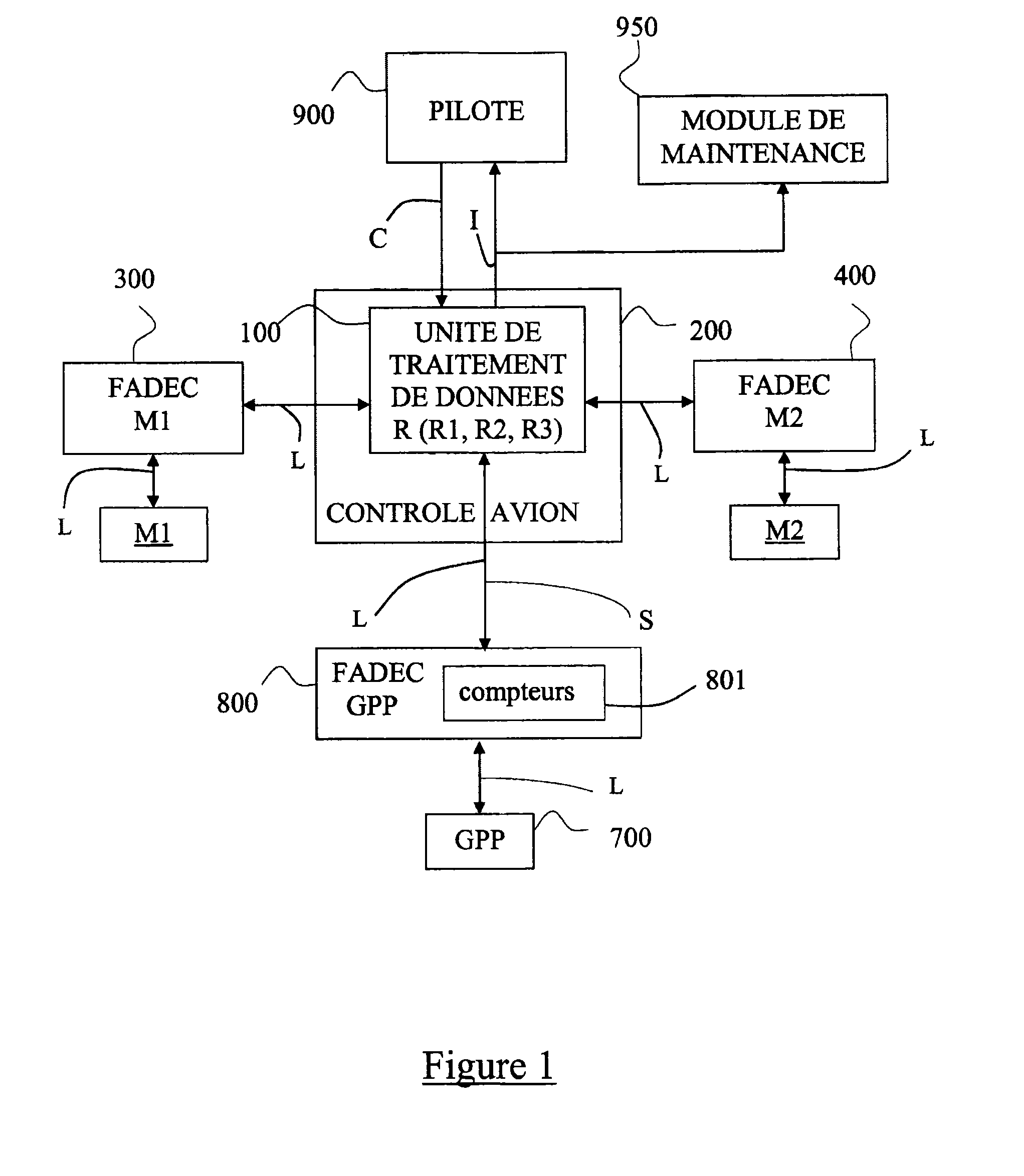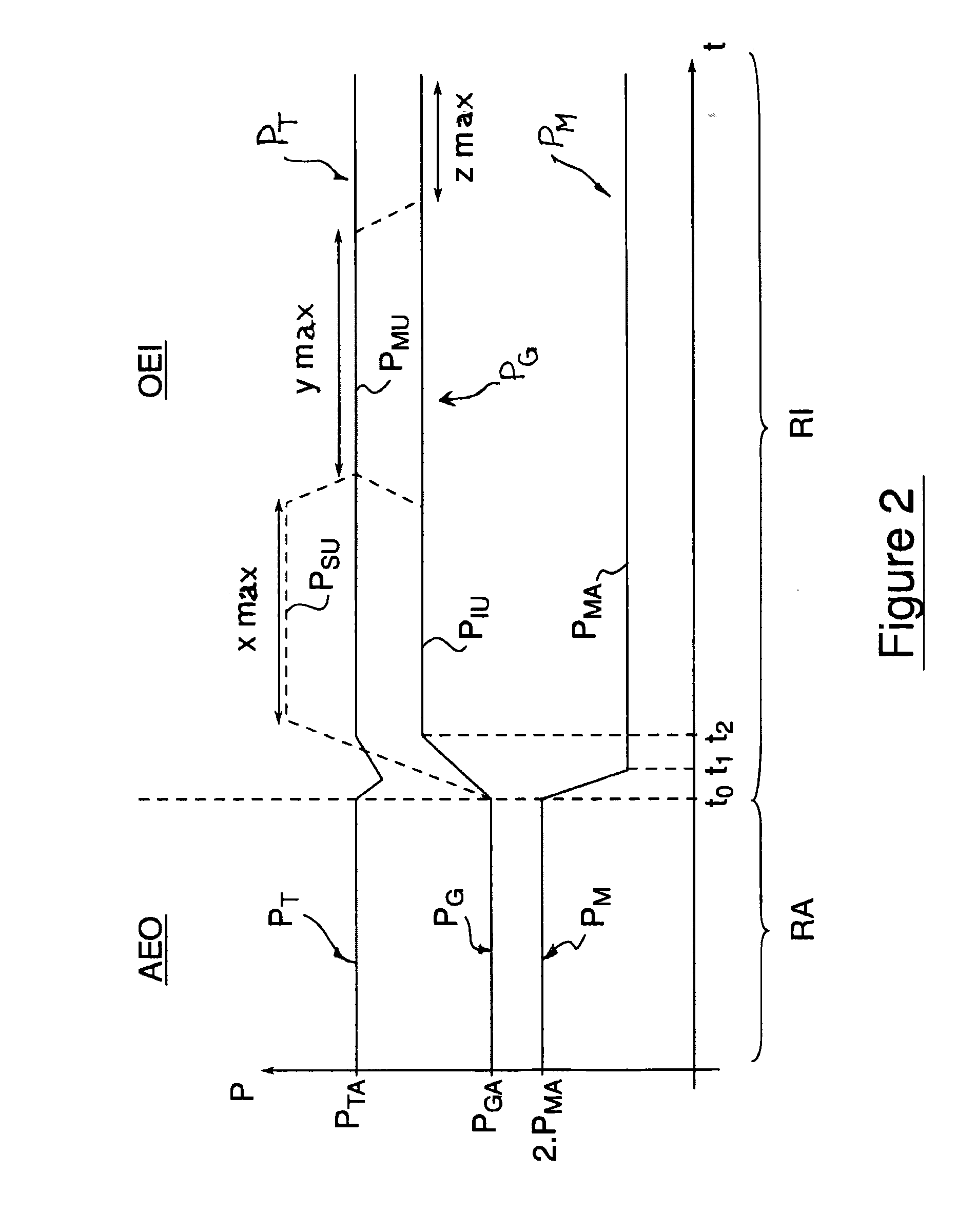Method and system for regulating power in the event of at least one aircraft engine failure
a technology of aircraft engine and power regulation, which is applied in the direction of machines/engines, energy-efficient board measures, instruments, etc., can solve the problems of limiting the capacity for acceleration, insufficient power to ensure propulsion as well as the restoration of acceptable,
- Summary
- Abstract
- Description
- Claims
- Application Information
AI Technical Summary
Benefits of technology
Problems solved by technology
Method used
Image
Examples
Embodiment Construction
[0012]The aim of the invention is to eliminate these drawbacks. To achieve this, the power contributed is supplied by generation of additional non-propulsive power, operating constantly, and produced by an additional, engine-class main power unit (abbreviated to GPP for “groupe de puissance principal” in French). A power unit is described as engine-class when the architecture and performance of the power generated is suitable for certification as an engine for use in all flight phases, on the same basis as the generation of power supplied by a main aircraft engine. A GPP comprises a gas generator, with dimensions intermediate between a conventional APU and a main aeroplane engine.
[0013]The generation of additional power of the GPP type is calculated so that it can promptly take up all or some of the non-propulsive power requirements of the aircraft. The constant use of a GPP can be adjusted depending on whether the requirements are both pneumatic and electrical, or mainly electrical...
PUM
 Login to View More
Login to View More Abstract
Description
Claims
Application Information
 Login to View More
Login to View More - R&D
- Intellectual Property
- Life Sciences
- Materials
- Tech Scout
- Unparalleled Data Quality
- Higher Quality Content
- 60% Fewer Hallucinations
Browse by: Latest US Patents, China's latest patents, Technical Efficacy Thesaurus, Application Domain, Technology Topic, Popular Technical Reports.
© 2025 PatSnap. All rights reserved.Legal|Privacy policy|Modern Slavery Act Transparency Statement|Sitemap|About US| Contact US: help@patsnap.com



